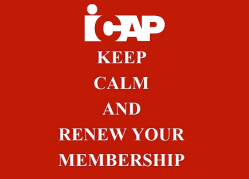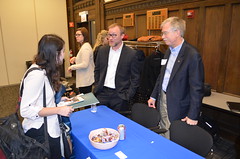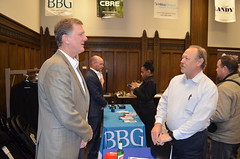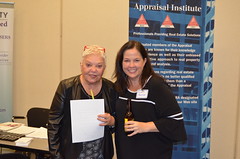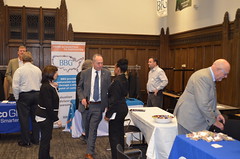Monthly Archives: May 2017
ICAP’s Collinsville Seminar Is Approved For 7 Hours Of CE
ICAP’s Collinsville Seminar Is Approved For 7 Hours Of CE in Illinois, Missouri, and Michigan (pending in Wisconsin and Indiana)
Non-Member pricing includes a pro-rated ICAP membership for the remainder of 2017.
Location:
Doubletree Hotel
1000 East Port Plaza Dr.
Collinsville IL
Date:
June 12, 2017
Click here to register, don’t delay…reserve your space today.
Seminar Outline:
8:00am – 8:30am Registration and Continental Breakfast
8:30am – 8:45am Welcome & Introductions from 2017 ICAP President Barton DeLacy, ASA, MAI, AI-GRS, CRE, FRICS
8:45am – 9:45am Regulatory Update
Brian Weaver, Appraisal & AMC Coordinator, Illinois Department of Professional & Financial Regulation
- New CE requirement changes in the state of Illinois
- Other regulatory news
9:45am – 10:00am Morning Break
10:00am – 11:00am State of the Illinois Apartment, Office, Retail, and Industrial Markets Thomas Mason, CoStar Group
- St Louis market (focusing on Metro East) economy & demographic trends
- St Louis market (focusing on Metro East) market fundamentals (supply, demand, vacancy, rent growth) for each property type
- Sales & Investment
- Five year fundamentals forecast
11:00am – 12:00pm Economic Conditions & Agricultural Market Paul Stoddard, Ph.D,
- Farmland as an investment
- Update on ag land values
- Farm leases and economics of producing farmers
12:00pm – 1:00pm Lunch
1:00pm – 2:00pm Marketing Your Appraisal Firm in the Digital World Michael Hobbs, MAI, SRA, LEED GA, President, PahRoo Appraisal & Consultancy
- Market analysis of the clients you serve
- Highest and Best Use of your time
- Valuation process – how to monetize your digital presence
2:00pm – 3:00pm Springfield Update Shaw Decremer, ICAP Lobbyist, Shaw Decremer Consulting, LLC
- Status of ICAP bills and other bills of interest
- What we can expect in near future for these bills
- Update on process/state of Springfield and what that means for appraisers
3:00pm – 3:15pm Afternoon Break
3:15pm – 4:15pm Valuation Consulting, a Primer to Diversify your Practice Barton DeLacy, ASA, MAI, AI-GRS, CRE, FRICS, Principal, DeLacy Consulting, LLC
- Identify and discuss non-lender sources of business, particularly allied professional service firms
- Crafting a phased engagement
- Understanding when the deliverable may be something other than an “appraisal”- the emergence of Valuation Consulting
- Tracking and charging for your time
4:15pm – 4:30pm Closing remarks
2017 Lisle Seminar Summary
2017 Lisle Illinois Appraisers Update Seminar
May 8, 2017, Sheraton Hotel, Lisle, Illinois
ICAP Reporter, Karen Emerle, SRA
Welcome & Introduction
The first of ICAPs three 2017 Illinois Appraiser Update seminars was held in Lisle, Illinois on May 8, 2017. Ken Mrozek, SRA, MAI, ASA, ICAP 2017 current Vice-President and Seminar Chair, opened the day’s event. Vice President Mrozek thanked everyone for attending and introduced the 2017 ICAP Seminar Committee. He expressed thanks to the committee members for their volunteer contributions of time and hard work toward producing successful 2017seminar programs. Vice-President Mrozek concluded his welcoming remarks by encouraging all to sign up and attend ICAPs upcoming 2017 Lobby Day event scheduled for May 16, 2017, and introduced ICAPs current President, Barton DeLacey, MAI, SRA, AI-GRS, ASA, CRE, FRICS, MUP.
President DeLacey provided a brief update on legislation issues and introduced Randy Barcella, the emcee for the day’s event. Mr. Barcella brings years of experience in both the appraisal (34 years) and real estate brokerage (33 years) professions. He hosts the Real Estate Revealed radio show airing Sunday mornings on AM560. Thank you Randy for graciously hosting the day’s events.

Attorney Craig Capilla opened the morning sessions. Attorney Capilla, a trial lawyer with the Franklin Law Group, can be reached directly at ccapilla@charlesfranklinlaw.com. The Franklin Law Group website is: www.charlesfranklinlaw.com. Attorney Capilla’s topic, Know Your Role – Appraising, Ethics, and the Law, brought us back to the basics of ethical concerns. Attorney Capilla encouraged us to think about “What our role as an appraiser valuation expert is,” reminding us the time to figure this out is before we say, “yes.”
Attorney Capilla asked, “What is ethical?” The answer: “The discipline dealing with what is good and bad and with moral, duty and obligation.” Appraisers today are being “spoon-fed” ethical duties from different sources. One result of this practice, Mr. Capilla said, is “the more layers added, the less analogous they become.” Nationwide, the USPAP Ethics Rule includes Conduct, Management, and Confidentiality. The Conduct section requires “an appraiser must perform assignments with impartiality, objectivity, and independence, and without accommodation of personal interests.” Another layer is the various State Licensing Statutes and Rules. In Illinois, unprofessional conduct is defined as “Engaging in dishonorable, unethical, or unprofessional conduct of a character likely to deceive, defraud, or harm the public.” 225 ILCS 458/15-10(a) (10) Unprofessional Conduct defined in 68 Ill. Admin. Code 1455-310 includes eleven (11) specific actions, “but is not limited to” just those actions. An appraiser belonging to any professional organization is subject to and must adhere to the organization’s professional standards, yet another layer.
Attorney Capilla encouraged all in attendance providing cautionary warnings and exhortations:
- Be careful not to misrepresent yourself.
- Be very clear you are not receiving any benefit.
- Be very clear you are not providing a “predetermined outcome.”
- Be careful you do not breach client-confidentiality.
- Read and review the Illinois State Appraiser Act and Rules.
- Read and review the eleven (11) specific unprofessional conduct actions defined in the Illinois Code.
- Read and review the required USPAP ethical standards.
- Read and review professional standards required by any professional organization to which you belong.
- Ask yourself:
- What are your ethical responsibilities?
- Are you meeting ALL those minimum ethical standard requirements?
- Are you operating at the highest ethical standards?
Litigation issues closed Attorney Capilla’s presentation. Three different case studies, providing examples of unethical behavior an appraiser does not want to emulate, were presented. Attorney Capilla warned appraisers that as a professional aiming to produce credible assignment results, to be sure to keep, in your work file, a full copy of every single version of any report you transmit or have transmitted. If involved in a litigation be sure to get specificity of what is being requested from you. Before providing any documents, make sure there is clarity. Ask the questions, “What do you mean? What are you looking for?” Previously, the maximum fine in Illinois was $10,000; currently it is $25,000.
Dan Daitchman, Manager, Great American Group Corporate Valuation Services presented Business vs. Real Property Appraisal. Mr. Daitchman’s topic addressed the questions, “When do you have one or the other? How do you value a business? Are real estate appraisers being hired to value the real estate component of a business?”Mr. Daitchman informed the attendees that Business Valuation emerged from real estate and become popular about 30 years ago. Of the three approaches to value, the Cost Approach, or Asset Accumulation Method, is the least likely to be used. It ignores the value of goodwill. Real Estate is the only other practice where the Income Approach is utilized. The three key inputs of the Discounted Cash Flow (DCF) Method include cash flows, rate of return, and time. The cash flows in business valuation often can be more volatile and typically stabilize 5-10 years in the future. Business Valuation includes two primary Market Approach methods: Guideline Public Company (GPC) and Guideline Merged or Acquired Company (GMA) Methods. A main difference between business and real estate valuations is the validity of the market approach. In real estate, the market approach is a stronger indication of value as comparable properties and transactions are common place and more data is available.

Mr. Daitchman posed the question, “How do you determine whether it is a Business or Real Estate Valuation?” The assets of a business are what drive the value of a business. One must determine which assets and/or type of assets (intangible, tangible) drive the cash flows for which type of firm. This determination or allocation of what drives the income of a business is decided on a case-by-case basis. It is important to know your company, analyze financial statements, interview company management, have experience and knowledge of the various firms, and perform due diligence. Two case studies provided and discussed related to a wind farm development and a real estate private equity firm.
State of the Chicago Apartment, Office, Retail, and Industrial Markets presented by Brandon Frankel of CoStar Group closed the morning sessions. CoStar employs 2,000 people. The data is aggregated. Mr. Frankel is the Market Analyst for the Chicago Market, and is responsible for analyzing the data.
Mr. Frankel’s presentation included the Chicago employment picture, and apartment, office, logistics, and retail fundamentals. Interspersed throughout was some information pertaining to submarkets such as Naperville, Lisle, Schaumburg, Joliet, and Aurora. The Chicago employment picture encompassed the historical growth, employment sector growth, tech surge behind employment gains and companies relocating to Downtown Chicago. The Chicago apartment section touched on single-family housing starts and apartment deliveries versus household growth, the largest 2016 deliveries, most common amenities included in new construction, rent versus income growths, and rent level and growth. Sales volume, pricing, inventory turnover, vacancies, and new construction issues were mentioned.
Randy Barcella closed the morning session asking a representative from each vendor to introduce themselves and invite seminar attendees to visit their booth. A special thank you to all the participants in the Vendor Showcase:
AI, ASA, Anow, CoreLogic, CoStar, Landy Insurance Company, MRED, NAIFA, Real Estate Revealed, Shumaker Technology Group, and Zimmerman Law Offices. Your participation enhances the seminar program and provides attendees an opportunity to connect individually with your organizations on a personal level. Contact information and a brief description of the Vendor Showcase is available as a footnote to the article.
Vendors give-away kicked off the afternoon sessions. Sponsors and vendors provided attendees the opportunity to receive a variety of gifts. The Appraisal Institute donated two appraisal related education books, Introduction to Statistics and the 14th Edition of The Appraisal of Real Estate. NAIFA offered a Visa gift card. CoreLogic and Landy Insurance respectively donated Swift Estimator Valuations and an Amazon Fire. Multiple Bone Fish Grill gift cards and one appearance on The Answer radio show was presented by Real Estate Revealed. Congratulations to the winning business cards belonging to David Heartshorn, Kathy Brorsen, Bob McDonald, Don Germaine, Mitchel Zaveduk, William Paul, Tami Bellisario, Janet Cimei, Paul Hildenbranski, Henry, and Shirley St Germaine.
Springfield Update opened the afternoon sessions. Presented by ICAPs Lobbyist Shaw Decremer, Shaw Decremer Consulting, LLC. Mr. Decremer provided general information and updates to the four bills which affect the appraisal profession. Providing a brief overview, Mr. DeCremer mentioned beginning in odd years, the General Assembly has a two year term. The current 2018 Assembly ends in 2019. Six thousand (6,000) bills filed in the Senate and House can either harm or benefit our industry. While it is difficult for a bill to be permanently dead, Springfield generally likes the status quo.

At the time of the seminar, the current status of four bills was recapped. Sponsored by Rep. La Shawn Ford, HB 0367 is dead. It may resurface in January. This bill was seeking approval to allow consideration of value after rehabilitation when an appraisal is performed on real estate. Both ICAP bills HB723 and HB 722 are sponsored by Rep. Robert Rita and both have been re-referred to Rules Committees. HB723 seeks the fee paid to an appraiser be shown separately from the fee paid to an appraisal management company on residential real estate closing documents. HB722 seeks to prevent appraisal management companies from passing on to any appraisers either the AMC national registry fee or any other costs, fees, or other expenses incurred solely by appraisal management companies. SB1531 amends the Real Estate Appraiser Licensing Act of 2002. It modifies the Illinois State Appraisal Board. It has passed out of the Senate and Rep. Rita has it in the House.
The Appraisal Foundation President, David Bunton’s presentation topic is “Update on The Appraisal Subcommittee, The Appraisal Foundation, TAFAC, AQB.” Mr. Bunton has been with The Appraisal Foundation for 27 years. The website is www.appraisalfoundation.org.

Some current issues President Bunton’s presentation touched on include a shortage of appraisers, one FBI background check, value range versus exact value, and appraiser fee ranges on loan estimate sheets. Mr. Bunton mentioned the network of State Appraiser Coalitions has reached 22. Mr. Bunton described ICAP as a national leader among the organizations. Six state coalitions now have representatives on the AF Advisory Council: ICAP (Illinois), Ohio, North Carolina, South Carolina, Virginia, and West Virginia.
AQB proposed changes include an alternate track for Licensed and Certified Residential credentials, enhanced Practicum Curriculum, on-line simulated properties, and testing out of some experience requirements. The question Mr. Bunton posed is, “Where do you set the bar, so it is meaningful for public trust versus a barrier to entry?” Mr. Bunton said appraisers are transitioning from a trade to a profession, college degree certified credential, and significant experience requirements. Another, fourth exposure draft is anticipated this summer. The desire is to get it right with no unintended consequences.
An exception to the college degree requirement is being considered for those Residential Licensed credential holders wishing to upgrade to the Certified Residential credential. Experience requirement has not changed since 1990’s, but both the valuation and general education requirement has increased and the national exam is more comprehensive. Changes to both the number of required experience hours and time frame in obtaining those hours are under consideration. PAREA, an alternative to gaining experience has been proposed. It provides three modules of appraisal experience obtained in-class and through an external practice based environment. This is proposed to address the trainee issue of being unable to find supervisors.
The ASB addressed misconceptions about what appraisers can and cannot do in conformance with USPAP in their publication entitled “Yes, I Can Accept that Assignment.” It is available on their website. A free webinar on May 18th will discuss the two restricted appraisal report samples published this month. One is residential and one is non-residential. The webinar will later be available on U-tube and the samples will be available on the AF website.
Ways to make USPAP easier to understand and navigate are being considered. A small team is being appointed to re-write SR1 in a narrative, rather than the outline, format. The committee will try to determine if that would make for an easier understanding. Standard Rules 3 and 6 are being split into two. Each will have their own Development and Reporting Standard. Helpful FAQ bubbles, flags and/or markers-will appear in the Standards to direct the reader to related FAQs. The electronic version will become more user friendly. Special Projects under consideration include a bridge between USPAP to IVS (IVSC) International Valuation Standards Council and the publishing frequency of USPAP. Originally it was updated quarterly. In the 1990s it became an annual bound publication. In the years 2005-2007 the editions were 18 months, and from the year 2008 to the present time, the editions are 24 months. It is anticipated from its present two year cycle, USPAP will become a four year cycle publication. The cycle change most likely will occur in four years, after the implementation of the AMC registry fee begins. Other professions still require an ethics code. There should be some kind of exposure to ethical standards. USPAP is 25 years old. Alternative Standards to USPAP were introduced in the States of Texas, California, Tennessee, Florida, Montana, Virginia, Missouri, Kansas, and North Carolina. Compliance issues for users of appraisal services set precedents for even more standards. There is exposure for the States to administer with increased regulatory burdens. To date, not one state has adopted alternative standards.
The APB activities have been suspended pending a study by the Board of Trustees. Valuation Advisories are not being embraced by stakeholders. They are considered too lengthy and not timely. Questions under consideration are: “Is there a need for voluntary guidance on valuation methods and techniques? Should the Foundation be involved in such guidance? If so, what should it look like? Should it be produced by a Standing Board or small committees tasked with specific topics?”
The Uniform Standard for Federal Land Acquisitions, the Foundation’s Yellow Book, has been released. Courses and conferences are available. AF provides assistance to State Appraiser regulators through training and information videos, courses for State Regulators, and voluntary tools. Assistance is also provided to US Government agencies. To enhance consumer relations, the “What every homebuyer should know about an appraisal” publication was developed and is available on the website. Valuation of Green Buildings addresses the improvement by 2020 of 20% efficiency in commercial buildings.
In 2007 there were 30,286 Licensed credentials in the United States. The peak number of appraisers occurred in 2008. The Federal Housing Administration, in 2008, required only Certified Residential appraisers be used. Licensed credential holders either upgraded or left the profession. Today, in 2017 there are only 7,854 Licensed credential holders. This is a real issue in rural areas. Factors influencing the “appraisal shortage” include economic, dispersion, and user-education. The economic factor is a result of a shortage of people willing to work at the current fees. Over time fees have not kept pace with inflation. There is a disproportionate number of appraisers in rural areas. Users of appraisal services believe Dodd-Frank prevents banks from using trainees. This is not true. The recent ABA Round Table told their members to use Trainees. The exam pass rates only take into consideration first time test takers. The largest number of test takers range in age from 26 to 35 years, the second largest number range in age from 36 to 45 years.
| No. of Licenses By Category | ||
| Year | 2007 | 2017 |
| Certified General | 36,881 | 39,210 |
| Certified Residential | 54,177 | 49,187 |
| Licensed Residential | 30,286 | 7,854 |
| Year | No. of Test Takers | Pass Rate |
| 2008 | 2,087 | |
| 2009 | 2,708 | 56% |
| 2010 | 1,106 | 55% |
| 2011 | 944 | 70% |
| 2012 | 925 | 79% |
| 2013 | 909 | 60% |
| 2014 | 1,684 | 64% |
| 2015 | 610 | 63% |
| 2016 | 662 | 67% |
Legislative Proposals: Congress is reviewing the current appraiser regulatory structure for possible revisions and improvements. The House of Representatives held an initial oversight hearing on November 16, 2016. A question being considered is “whether appraisers should be subject to an FBI background check at issuance of their credentials? Would this eliminate a need for multiple background checks?” TILA, RESPA integrated disclosure currently does not provide any appraiser fee change from what is noted on the loan estimate. Questions being considered are, “Why not a range? Should appraisals be a specific dollar amount or a range? Permitting a range opens up AVMs for market value.
Rumors abound regarding the future need for residential appraisers. A new product being utilized is the Property Inspection Land Waivers. CoreLogic is buying up multiple companies. The profession is really in a state of flux. In closing, President Bunton encouraged appraisers to get involved, comment on exposure drafts, and/or attend a public meeting. While the process is very competitive and interviews are done in open session, apply to become subject matter expert or to serve on a Foundation board.

Mr. James Siebers, Content Specialist for CoreLogic, presentation topic was “Current Topics in Cost Approach and Using for Adjustment Support.” Find Mr. Siebers Blog under the Property Valuation category at www.corelogic.com/blog/authors/james-siebers and www.swiftestimator.com Prior to joining CoreLogic four and one-half years ago, Mr. Siebers spent more than 25 years as a municipal tax assessor for multiple jurisdictions in Wisconsin.
Mr. Siebers provided attendees with a historical perspective of the Cost Approach. The year 1932 ushered in the Cost Approach. A merger with Boeckh, then with MSV, followed by the CoreLogic purchase in recent years. CoreLogic employs 6,000, of which 300 people work for Marshall & Swift. The Cost Approach has a variety of uses and users; it is used by insurance and underwriting, real estate appraisal, banking, construction, government, home inspection, and it is used by more than 80% of the country’s assessors. In 1983 component based estimating, assemblies were turned into formulas. Research covering labor wages, material costs, and equipment costs has been producing a formalized methodology for over 80 years. The Expertise in Data Team is now called Enterprise Data Group. Across the country, 2,629 locations are monitored.
Mr. Siebers reminded appraisers that the theory of cost approach is based upon comparison, reproduction or replacement. The Cost Approach is defined as: A set of procedures through which a value indication is derived for the fee simple interest in a property by estimating the current cost to construct a reproduction of (or replacement for) the existing structure including an entrepreneurial incentive, deducting depreciation from the total cost, and adding the estimated land value. Adjustments may then be made to the indicated fee simple value of the subject property to reflect the value of the property interest being appraised.”(The Dictionary of Real Estate Appraisal, Fifth Edition, AI Publication) It is most reliable for a variety of assignments, including but not limited to: New or proposed construction, when land value is supported, when improvements represent the highest and best use, special purpose properties, and to support the validity of Market Value. The Cost Approach plays a crucial quality control function, provides a reality check, and helps identify potential runaway or rapidly declining markets.
The three cost methodologies provided in the Marshall & Swift building cost data are: The Square Foot Methodology, the Segregated Methodology, and the Unit-In-Place Costs. There are a variety of data sources which include cost services, such as Marshall & Swift Cost Handbook, local builders/contractors, and appraiser files. Mr. Siebers provided attendees a brief overview of what Marshall & Swift costs contain and do not contain, and how to successfully use the cost service. To utilize a cost service several items must addressed. They include but are not limited to: Type, construction characteristics, quality, direct (hard) and indirect (soft) costs, entrepreneurial profit and/or incentives in addition to the above costs, and fees for architects, engineers, appraisers, et cetera which are indirect costs. Final steps in the Cost Approach include subtracting deprecation, adding land and improvements. Mr. Siebers reminded appraisers the Cost Approach is a consistent uniform methodology that may be applicable in certain situations, and a reminder that adjustments should never be more than what it costs.
Regulatory Update
The final presentation of the day, entitled “Regulatory Update” was presented by Mr. Brian Weaver, Appraisal and AMC Coordinator for the Illinois Department of Professional & Financial Regulation.
Coordinator Weaver reported there are currently 1538 Certified General Licensees, 2260 Certified Residential Licensees, and 434 Trainees in Illinois. In 2005 there were 2200 Trainees. Currently of the 165 registered Illinois AMCs, only 26 are from Illinois. During the past ten years Coordinator Weaver has seen 2758 complaints. Today, there is 157 total complaints: 5 Trainee, 92 Certified Residential, 46 Certified General, 13 AMC, and one Temporary Practice.
The May 2017 Newsletter, Volume 10, Issue 2 has been posted to the Department’s website. Current and past issues of the newsletter are posted on the Department’s website: www.idfpr.com/profs/appraisal.asp. Ideally the newsletters would be sent directly to appraisers. Currently the focus is on implementing on-line applications, upgrading timelines, and the C &R Fee study.
Upgrading, why so slow? An article in the newsletter addresses this question. A spreadsheet captures the percentage of time it has taken to complete the process.
| Applicants | Days | % |
| 23 | 1 -59 | 09.39% |
| 46 | 60 – 89 | 18.78% |
| 33 | 90 – 119 | 13.47% |
| 54 | 120 – 179 | 22.04% |
| 61 | 180 – 365 | 24.90% |
| 28 | 366 + | 11.43% |
Top excuses heard by the Board include: “We didn’t know, we didn’t mean to mislead, you didn’t tell us, we don’t consider this to be an appraisal, and look how many appraisers were paid on time (AMC).” There has been three unlicensed practice cases, of which two are tax appeal situations. AMC complaints resulted in three consent orders, and several AMCs surrendered their license. “Gimme Air,” a reminder appraisers do not have to sign any AMC requested document stipulating the AMC has not interfered with the appraiser. On complaints, the violation most often seen pertains to Sec.1455.245 of the Illinois Real Estate Appraiser Licensing Administrative Rules. The following statement MUST be included: “The comments by the licensed real estate appraiser contained within this appraisal report on the condition of the property do not address “standards of practice” as defined in the Home Inspector License Act [225 ILCS 441] and 68 Ill. Adm. Code 1410 and are not to be considered a home inspection or home inspection report.” Coordinator Weaver reminded all appraisers to check your certifications, asking the question, “Is this statement included?”
Coordinator Weaver mentioned two recent complaints filed against Zillow. One from a party in Southern Illinois and one from a Glenview, Illinois resident. Zillow Zestimates, per Zillow, are “intended as a useful starting point…,”and …”is not an official appraisal.” Products similar to Zillow include but are not limited to, Trulia, Redfin, Bank of America, Chase, Acre Value, Realtor.com, Bing Maps, and Home Appreciation Calculator. Each have their own disclaimer.
The CE Completion Date and License Renewal Date—“What does it mean?”
2017 – All 28 hours should be completed no later than 6/30/2017.
2019 – In the next renewal cycle, all 28 hours must be completed by 6/30/2019.
The license renewal date, September 30th of odd years, remains the same.
The CE Donut between cycles — “What does it mean?”
The current cycle is October 1, 2015 through September 30, 2017. For the next cycle beginning October 1, 2017 and for each subsequent two year cycle the CE must be finished by June 30th. If ALL CE is finished/completed by June 30th of the odd year, then CE taken between July 1st and September 30th in the odd year may be counted toward the next renewal cycle. The total amount of CE hours taken in the Donut period that will be allowed to be carried over to the next renewal cycle has not yet been determined. Stay tuned.
Must attest you are caught up. AWLs (Administrative Warning Letters) will be issued. One hundred dollars ($100) will be assessed for every required CE hour missing at the CE completion date. Request for CE approval for courses taken in another State must be submitted before the end of May; there are no exceptions, no excuses. The consequences of not being done with all 28 hours of required CE by the license renewal date include the inability to renew your license, you will be fined, suspended, and issued a public discipline.
If you plan to retire before September 30th, then don’t renew. If health issues prevent you from working, then you need to seek a variance. Don’t wait until October 1st to “late renew;” it won’t work. The legal department is currently working on the Rules. One cycle at a time; one must finish the 28 hours required for 2017 before starting on the 2019 cycle. Education providers have been notified of the change in Illinois CE requirements.
To Recap:
Renewal Cycles are Two Years.
CE Completion Date is June 30th in the odd years.
License Renewal Date is September 30th in the odd years.
USPAP must be completed by June 30th in even years.
All renewals will be done on-line. Please be sure to update the State with your current email address.
Subsequent to the Lisle Seminar, the Department has provided the following update regarding the issuance of renewal notices. Starting early in July, license renewal notices will be sent out 90 days, 60 days, 30 days, and 15 days prior to the September 30th expiration date. After June 30th an audit will be run on CE hours. The plan is to send notices to any licensee deficient in their CE hours.
Coordinator Weaver mentioned the U of I is conducting a C & R Fee Survey. For personal safety a cautionary warning to be careful doing your job, and as you are traveling through to remember how you might look to people. A wide angle lens, 12 to 16 megapixels, smart remotes action camera might be an asset towards safety.
Leaving us with a chuckle, and reminder to wordsmith our appraisals, Coordinator Weaver shared the following “oops” moments. They are jalousie not jealousy windows. It is supplemental not supple mental. And, it is the secondary market not second dairy market.
Closing Remarks
The ICAP PAC Social immediately followed the seminar. Thank all who attended and contributed to the PAC Fund. ICAP wishes to extend a special thank you to all the participants who attended our Lisle Seminar. Your continued participation helps ICAP be successful in serving you and our collective profession. We thank all of you who took the time to complete the survey. Your feedback is important to us, and provides us necessary information as to how we can better serve you, our fellow appraiser professionals.

ICAP also wishes to thank each of the speakers for sharing their expertise and providing attendees with an excellent seminar program. ICAP wishes to thank all the vendors who participated this year providing appraisers and attendees an opportunity to meet and learn more about the services offered to the profession.
ICAPs schedules three annual Update Seminars. The 2017 final two Update Seminars are scheduled for June 5th in Springfield, Illinois and June 12th in Collinsville, Illinois. Please visit our website to register for one or both of these educational and informative offerings. www.icapweb.com
We thank you for the privilege to serve you and our collective profession, and we continue to look forward at the challenges ahead.
The ICAP Board of Directors
Footnote – Vendor Showcase

AI, Appraisal Institute, 20 plus years supporting ICAP, premier education provider, www.appraisalinstitute.org
ASA, American Society of Appraisers is a multiple disciplinary organization: Fine Arts, Gems & Jewelry, Business Valuation, Real Estate, ASA is merging with NAIFA www.appraisers.org
Anow Cloud Based Multi-Faceted Appraisal Office Management Software www.anow.com
CoStar, Nation’s providers of Commercial Real Estate Data and Market Analytics, www.costar.com
CoreLogic, International, 7 years old, purchased Marshall & Swift in 2014; their motto “Clients First”. www.corelogic.com/solutions/marshall-swift.aspx
Landy Insurance Expert in cyber security and insurance, Part of Real Estate Revealed Radio Team, New Bodily Injury & Property Damage Policy www.landy.com
MRED, Real Estate multiple listing service. Provides appraisers training sessions. On-site training available when there is a guaranteed 8-or-more appraisers in attendance. www.mredllc.com
NAIFA, National Association of Independent Fee Appraisers. Scheduled golf outing and upcoming seminars. www.naifa.com
Real Estate Revealed AM 560 The Answer, www.realestaterevealed.net, www.560theanswer.com
Shumaker Technology Group Website development of user-friendly websites for Real Estate Appraisers, coalitions and professional organizations. www.shumakergroup.com
Zimmerman Law Offices Six lawyer law firm primarily in professional licensure matters on the State and Federal level, license applications, disputes, litigation, business disputes with AMCs, customers and/or clients. www.attorneyzim.com
President’s Column – A Message From ICAP’s President
President’s Column- ICAP
Our Businesses are Professional Firms – not “shops”
2nd Q 2017
by P. Barton DeLacy
2017 ICAP President
Last time we spoke of what it means to be a valuation “professional.” Today, let us look at our businesses. David S. Bunton, for the past 27 years, the President of the Appraisal Foundation, was one of our guest presenters at ICAP’s 2017 Lisle Seminar May 8. At lunch he lamented how many appraisers refer to their small businesses as “shops.” Shops imply the sale of commodity goods- one thinks of specialty stores or maybe a barber shop. Valuation services, he insisted, are the domain of professional service “firms.”
The word “firm” come to us from the Latin- to ratify by signature. Webster’s defines a “firm” as a commercial partnership. The term has become virtually synonymous with the businesses provided by our fellow professionals in law and finance. Begin with the end in mind, as Stephen Covey exhorted in his seminal “Seven Habits of Successful People.” No matter how small, our ICAP ranks are filled with small entrepreneurial businesses- professional firms of fair, impartial and objective valuers- not order-taking commodity “shops.” Go where you want to be- refer to your business as a firm!
In a related matter, I recently moderated a panel discussion at the RICS Summit for the Americas, here in Chicago for commercial appraisers. The topic: The Future of Valuation Firms 2020- Convergence, Integration or Fragmentation? The national and global valuation leaders for CBRE, Cushman & Wakefield, Altus, Colliers, Newmark Frank and JLL all participated. The discussion was lively, but the take-aways were these:
1. Big data and statistical analytics will eventually render the commodity appraisal obsolete (commercial too!). Automatic Valuation Models (AVMs) will replace bank appraisals the way Turbo Tax took over tax returns. Valuers will need to adapt like tax accountants did.
2. The big appraisal divisions (many funded by private equity and managed within much larger brokerage operations) will continue to poach one another’s staffs but cannot articulate a vision for growth.
3. The bright light for small firms is what the brokerage outfits cannot provide: local specialization (residential falls into this category) and valuation counsel.
Valuation counsel is advisory work built from our core competencies of fair, objective and unbiased analysis of real estate and land economics. Examples include any type of litigation support, property tax consulting, estate work or simply advising owners and occupiers on highest and best use. Long dominated by MAIs, valuation consulting is wide open to the professional residential valuer. More on building a consultative business next month.
P. Barton DeLacy, MAI, AI-GRS, CRE, FRICS
2017 ICAP President

